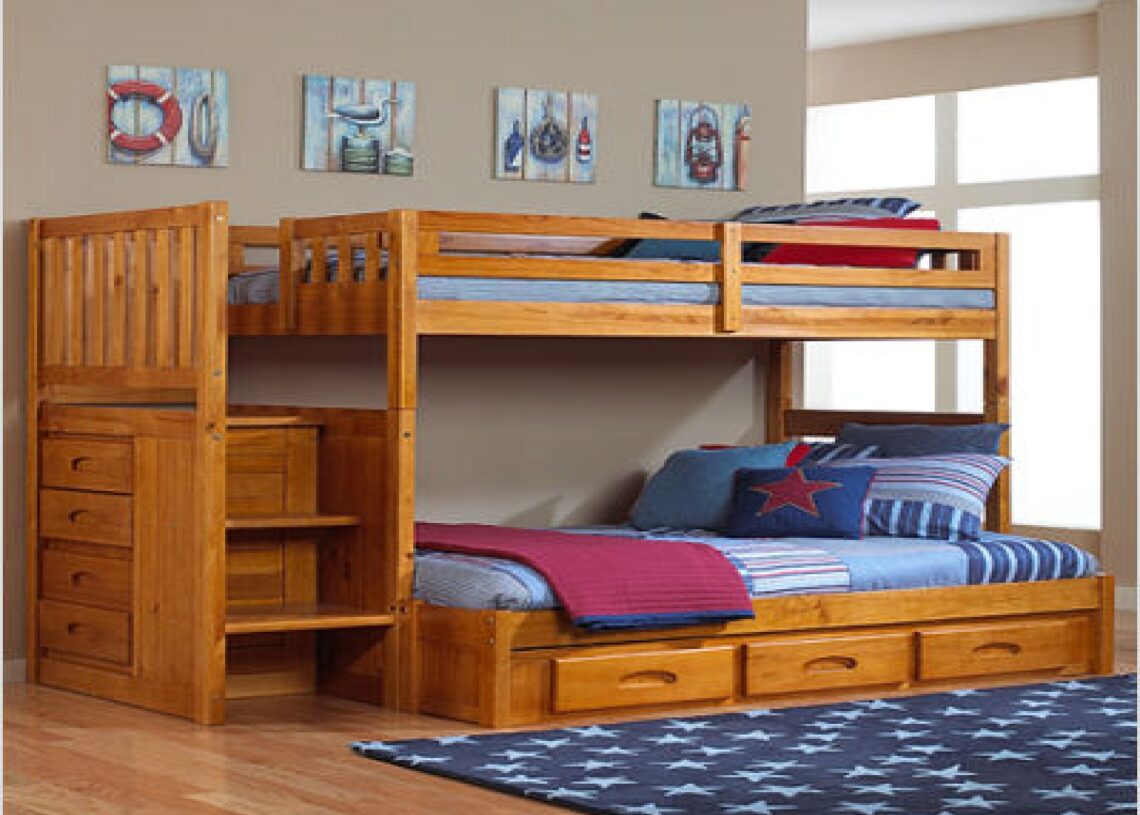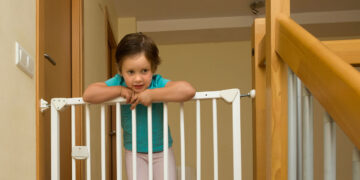Maximizing Space with Creative Sleep Solutions
In today’s world, where space is often limited, innovative furniture solutions are essential for children’s rooms. Bunk beds, loft beds, and trundle beds have emerged as popular choices, offering both functionality and style. These vertical solutions are particularly valuable in smaller rooms, allowing you to make the most of available space without sacrificing comfort or aesthetics.
Bunk beds offer a classic way to save space, while loft beds elevate the sleeping area, freeing up valuable floor space below. This design is ideal for creating dedicated zones for studying, playing, or storage. Trundle beds provide an extra sleeping surface that can be easily tucked away, perfect for accommodating guests or siblings.
Designers are also incorporating smart design elements into kids’ furniture to maximize functionality. Built-in storage and adjustable components provide clever solutions for organizing toys, clothes, and other essentials. The goal is to create a space that is both practical and visually appealing, catering to the evolving needs of growing children.
Fostering Focus: The Importance of Ergonomic Study Spaces
As parents increasingly prioritize their children’s well-being, ergonomic study tables have gained significant attention. These tables are designed to promote healthy posture and create an optimal learning environment at home. With adjustable heights and innovative features, they adapt to a child’s growth and encourage better concentration.
Ergonomic design in kids’ study tables focuses on providing a supportive workspace that minimizes strain and encourages better posture. Many tables now integrate smart sensors that remind children to take breaks, adjust their posture, or even monitor air quality. This holistic approach supports not only physical health but also cognitive function, creating a more conducive learning environment.
The kids’ furniture market is experiencing continuous growth as parents recognize the importance of ergonomics and sustainability. The demand for ergonomic upgrades and smart-sensor integration is a significant driver, reflecting a broader trend toward investing in children’s health and well-being through thoughtfully designed furniture.
Taming the Toy Tsunami: Creative Storage Strategies
Toy storage can be a significant challenge in any home with children. Finding clever ways to keep the chaos at bay is essential for maintaining a tidy and organized living space. Modern approaches focus on blending toy storage seamlessly into your home’s design, ensuring that functionality meets style.
One popular trend involves using furniture that doubles as storage. Ottomans with lift-up lids and media consoles with deep drawers are excellent choices. These pieces keep toys out of sight while still serving their primary function, blending effortlessly into the room’s aesthetic, especially in open-concept layouts.
Baskets, bins, and soft storage options offer a blend of texture and warmth to a living space. Woven or rope baskets and canvas bins are especially useful when placed in open shelves. Neutral fabric bins add to the organized feel without looking cluttered, making toy access easy and stylish.
For smaller living areas, wall-mounted solutions and floating shelves are invaluable. Hanging bags or nets are perfect for storing soft toys. These vertical storage options keep the floor clear while ensuring toys remain within easy reach for children.
Rolling carts and stackable boxes provide flexible storage solutions, fitting well in tight layouts or multi-use spaces. These mobile options allow for quick and easy cleanup, adapting to changing needs as playtime evolves. Their adaptability makes them a favorite for maintaining order.
Prioritizing Safety: Choosing the Right Play Mat
Creating a safe and fun environment for kids requires careful consideration of every detail, including the play mat. Parents are increasingly focused on play mats that not only cushion tumbles but also ensure a healthy play space. Choosing a play mat made from non-toxic materials and designed with essential safety features is a smart choice.
The best play mats avoid harmful chemicals. Look for mats made from materials that are certified non-toxic, such as those free from BPA, phthalates, and formaldehyde. Brands are now using natural latex and organic cotton, ensuring both safety and sustainability.
Essential safety features include adequate thickness to cushion falls without posing a tripping hazard. Waterproof covers using safe TPU films are preferable to those using chemical-laden foams. A non-slip base is crucial to keep the mat securely in place during playtime.
Many leading brands focus on safe materials. For example, the Toki Kids Play Mat uses Dunlop Natural Latex and boasts OEKO-TEX and GOTS (organic cotton) certifications. NatureKidsCo Organic mats use organic cotton, natural latex, and polyester (OEKO-TEX certified).
Balancing Aesthetics and Functionality in Kids’ Room Decor
Creating a kid’s room is more than just filling a space; it’s about crafting an environment where imagination can flourish, growth is supported, and functionality meets fun. It’s a delicate balance that requires thoughtful consideration—not only of aesthetics, but also of safety, comfort, and adaptability. A well-designed children’s space fosters independence, encourages play, and supports learning, making it an important part of a child’s development.
The baby and children’s furniture market is steadily expanding, driven by rising parental expectations and increased awareness of how a child’s environment influences their emotional and cognitive growth. This reflects a growing emphasis on creating nurturing, engaging, and personalized spaces for kids. Modern design trends in this category are shifting away from overly themed or temporary decor toward timeless, flexible elements that can grow with the child.
Contemporary kids’ room design focuses on blending playful aesthetics with smart, practical solutions. Parents are increasingly seeking furniture that adapts to their children’s evolving needs—such as cribs that convert into beds, height-adjustable desks, and seating that can be reconfigured as kids grow. Priorities like durability, safety certifications, non-toxic finishes, and rounded edges are now non-negotiable. At the same time, pieces that reflect personality—like whimsical bookshelves, colorful accent pieces, and customizable wall art—help children feel ownership of their space.
Maximizing space and functionality is another key focus. For families in smaller homes or shared spaces, modular furniture, wall-mounted shelves, and under-bed storage are lifesavers. Multi-purpose furniture, like bunk beds with desks or storage drawers built in, allows for flexibility without compromising on play or study areas. This design approach makes every square foot count while maintaining a sense of spaciousness.
Sustainability is also becoming a central concern for today’s families. More parents are choosing furniture made from eco-friendly materials like FSC-certified wood, bamboo, and recycled plastics. They are also prioritizing products made through ethical, low-emission manufacturing practices. This growing preference reflects a broader cultural shift toward conscious consumption—where beauty, function, and responsibility are no longer mutually exclusive.







